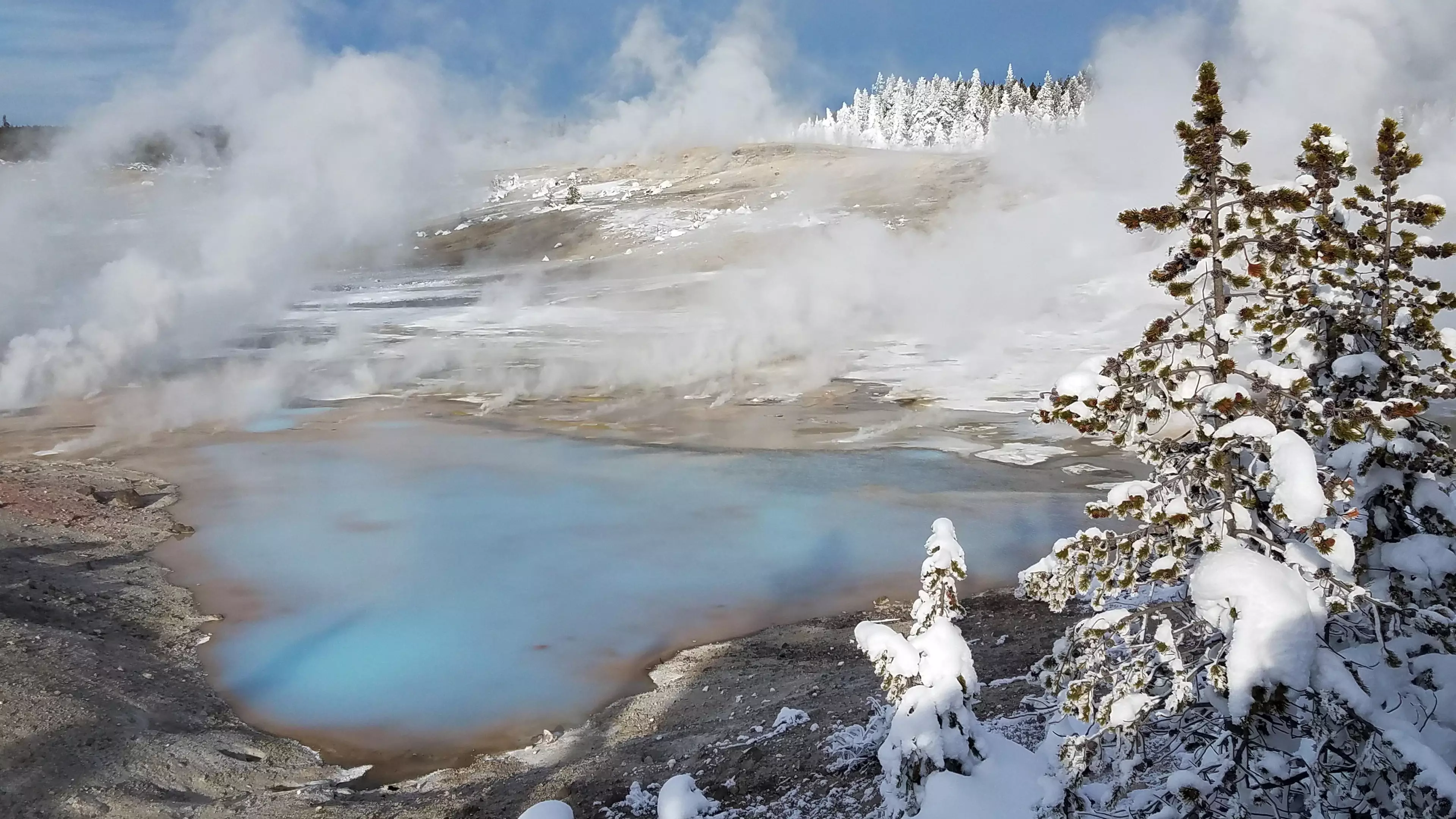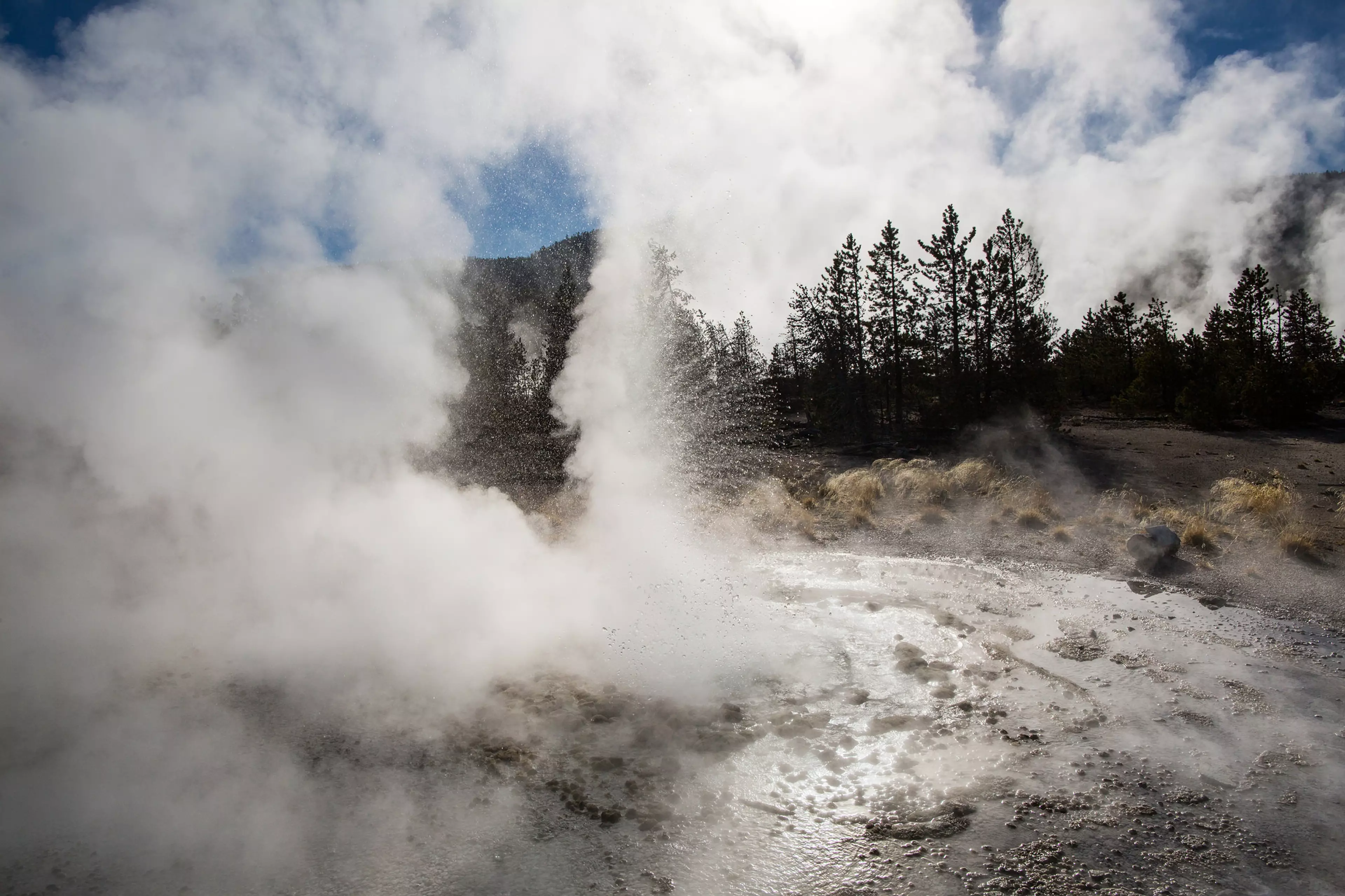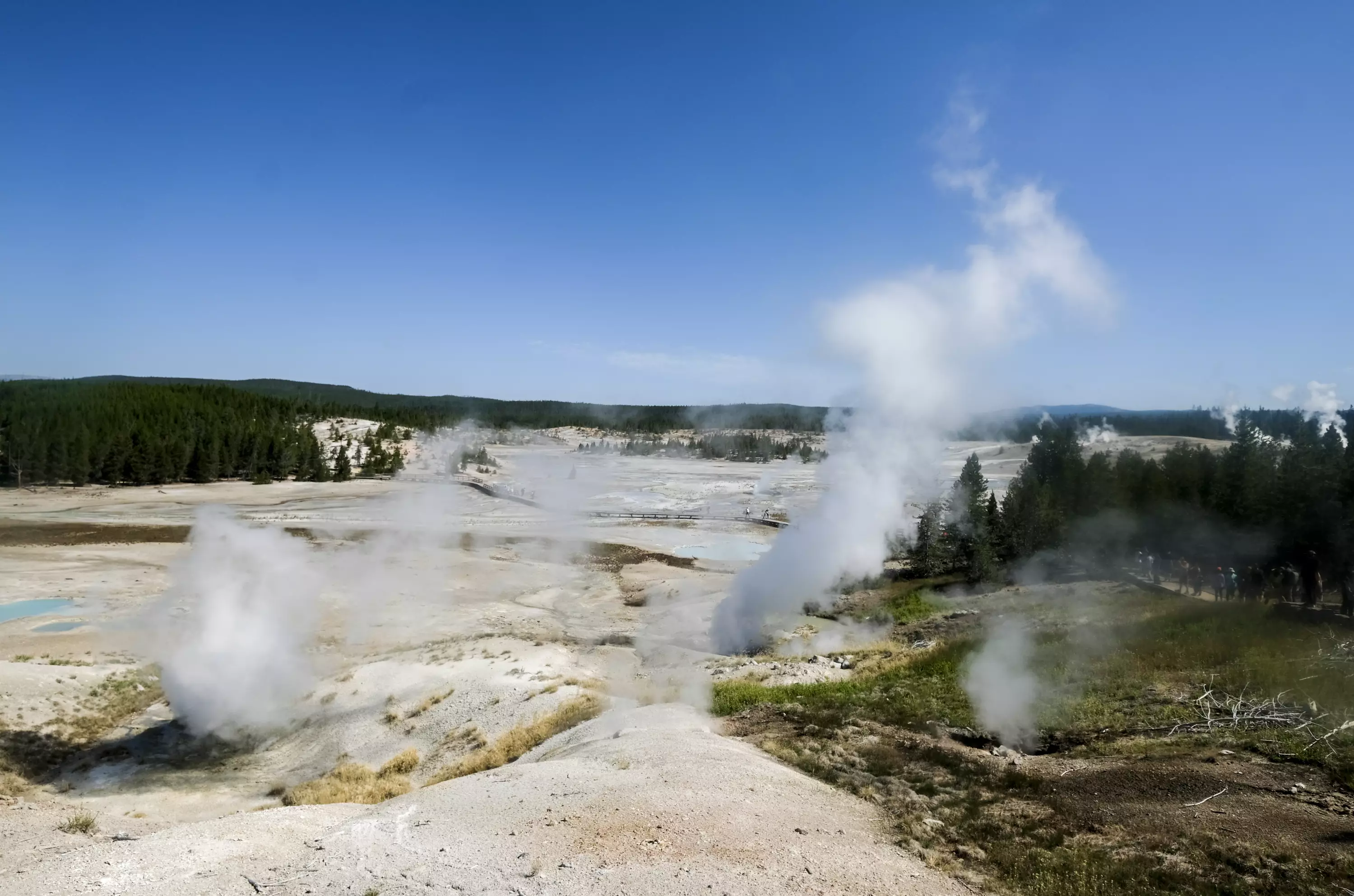
A space the size of Chicago in Yellowstone National Park has been expanding and shrinking for the past 24 years.
The Norris Geyser Basin is one of the oldest and hottest areas of the park, and has been pulsating due to the extreme molten heat beneath the surface.
According to reports, between 2013 and 2014, the geyser rose by 5.9 inches each year, with scientists at a loss as to why.
Advert
However, after using satellite radar and GPS data to analyse the site, researchers have discovered that the changing formation of the geyser is due to magma trapped below the surface, which has been releasing hot gases.
The incredible discovery was reported in National Geographic, which claimed that the pressure was caused by the magma pushing its way to the surface - a common phenomenon throughout the entire park.

The first rise in the surface of Norris Geyser was noted as far back as 1996, with it lifting 4.7 inches by 2004. Then, between 2005 and 2013, it shrank back by 2.8 inches, before rising once again the following year.
Advert
Despite another recent increase in the surface area, scientists now believe it has come to a rested state, at least for now.
Dan Dzurisin is one of the authors of the study into the bizarre occurrence.
He told National Geographic: "Modelling... suggests the 1996-2004 uplift was caused by an intrusion of magma about 14 km [8.7 miles] beneath Norris.
"When magma intrudes the crust it cools, crystallises, and releases gases that had been dissolved in the melt.
Advert
"Gas escape lowers pressure in the magma, causing the surface to subside... But rising gases can become trapped under an impermeable layer of rock, causing the kind of rapid uplift seen at Norris from late 2013 until the [magnitude] 4.9 earthquake in March 2014.

"It seems likely the quake created microfractures that allowed gases to escape upward again, resulting in subsidence that ended in 2015.
"The third uplift episode from 2016 to 2018 suggests rising gases became trapped again, this time at a slightly shallower depth."
Advert
Yellowstone National Park sits in the northern state of Wyoming, and is famous for its bubbling pools and impressive geysers.
Beneath the park lies a dormant 'supervolcano', which experts think last blew around 640,000 years ago. But while the recent discovery may cause some people to worry, Mr Dzurisin just said it was just 'awesome'.
Speaking to Newsweek, he said: "For the first time, we've been able to track an entire episode of magma intrusion, degassing and gas ascent to the near-surface. For those in the know, that's awesome - not alarming."
Featured Image Credit: PATopics: Science, Interesting, US News